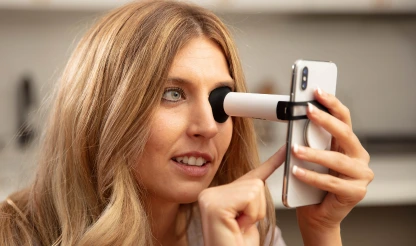Refraction Technology
Virtualization has revolutionized our lives, enabling us to bank, shop, learn, socialize, and even buy cars from the comfort of our homes. Despite the dramatic digitization of our lives, eye care remains largely untouched by this transformation.
There is a crisis in eye care due to an aging population, an increase in eye disease and visual impairment, and an eye care provider shortage. The traditional model of eye care with an in-office exam is not sustainable, and it is very expensive. Technology can provide the solution to these problems. Eye care must transition to a virtual digitized format just like all of the other digital transformations in our lives.
It is time to change the model of eye care.
Imagine low-cost small portable devices that use your smartphone to test your eyes. These devices can check your vision, color vision, contrast sensitivity, and your need for vision correction. Using these technologies from the comfort of your home, you will have an accurate measure of your vision and eye health within minutes. These technologies are connected to a Telehealth platform so that you can obtain a glasses or contact lens prescription, order glasses and contact lenses, or meet with an eye care provider digitally.
This is not science fiction as the technologies exists.
EyeQue has created all of the devices described above. EyeQue has also developed the world’s only AI based refraction measurement device that combines the power of an autorefractor (the machine that automatically measures your eyes) and a phoropter (the device that the eye doctor uses to check your prescription with your input). These devices are so small that they fit in the palm of your hand, and are operated at home!
EyeQue has also developed a state of the art, HIPPA compliant, Amazon Web Services protected Telehealth platform to collect the data from its devices so that they can be reviewed by an eye care provider and so that you can follow your eye health over time.
Backed by a decade of innovation, 35 patents, and industry-leading optics expertise, EyeQue is a brand you can trust.
EyeQue – join the journey!
*https://modernod.com/articles/2019-mar/the-future-of-optometry-in-america. The author calculated the projections using data from the American Optometric Association’s 2014 Workforce Study and the Association of American Medical Colleges & Bureau of Health Professions Report 2002-2003.
Quick Links
Factors Impacting Vision
Many conditions may impact your vision. This is why EyeQue’s vision screening and vision monitoring tools are important.
These tools are important for your eye health, guiding your doctor and you to be sure that you get the most accurate and effective care.
Eye Diseases
- Refractive Errors
Myopia (Nearsightedness), Hyperopia (Farsightedness), and Astigmatism
Presbyopia – need for near vision correction - Amblyopia (Lazy Eye)
- Color Vision Deficiency
- Myopia Management-treating and following myopia changes
- Post-surgical vision changes – after cataract surgery or other refractive surgery
- Keratoconus – cone like shape of the cornea
- Corneal changes – infections, dystrophies, or degenerations
- Cataracts-clouding of the natural lens of the eye
- Glaucoma- high eye pressure from either open angle or narrow angle changes
- Dry Eye Disease and Management (DED)
- Inflammation and Infections of the eye – uveitis and all types of infectious organisms
- Macular Degeneration (AMD)-dry or wet
- Diabetic Retinopathy (DR)
- Retinal Detachment (RD)
- Retinitis Pigmentosa- an inherited retinal disorder that may lead to blindness
- And many other eye conditions
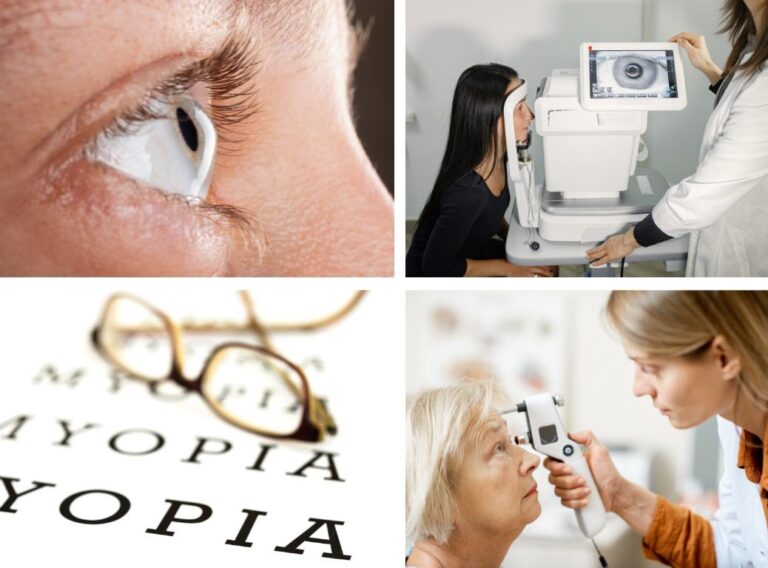
Systemic Diseases
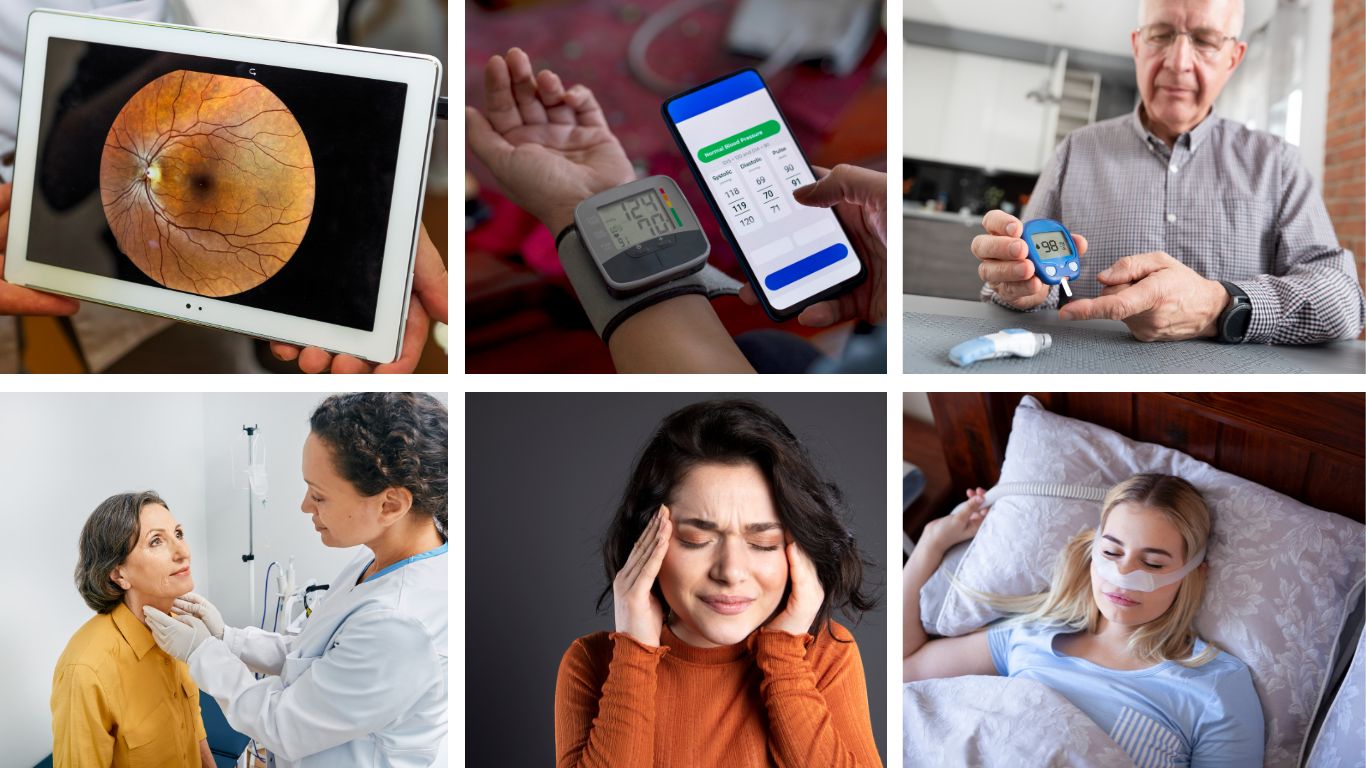
Diabetes can have several adverse effects on the eyes, potentially leading to vision loss if not properly managed. Here are some of the main eye problems associated with diabetes:
1: Diabetic Retinopathy:
– This is one of the most common vision-related complications of diabetes. High blood sugar levels can damage the tiny blood vessels in the retina, the light-sensitive tissue at the back of the eye. This damage can cause these blood vessels to swell, leak, or even close off entirely. In some cases, abnormal new blood vessels grow on the surface of the retina.2. Diabetic Macular Edema (DME):
– This condition occurs when there is a buildup of fluid in the macula, the part of the retina responsible for sharp, central vision. DME can occur at any stage of diabetic retinopathy, although it is more likely as the disease progresses.
3. Cataracts:
– People with diabetes are more likely to develop cataracts at an earlier age than those without. A cataract clouds the eye’s natural lens, leading to blurred vision and other visual disturbances.4. Glaucoma:
– Diabetes can increase the risk of developing glaucoma, a disease characterized by increased pressure in the eye, which can damage the optic nerve. The most common type related to diabetes is open-angle glaucoma, but neovascular glaucoma, where new blood vessels grow on the iris (the colored part of the eye) is another form that can specifically occur in people with diabetes.5. Blurred Vision:
– Blurred vision can be an early symptom of diabetes, often resulting from high blood sugar levels causing fluid to enter or leave the eye lenses. Once blood sugar levels are controlled, the vision usually improves.Prevention and Management:
– Regular Eye Exams: People with diabetes should have a comprehensive dilated eye exam at least once a year to catch any changes early.
– Blood Sugar Control: Maintaining good blood sugar levels can prevent or slow the progression of diabetic eye diseases.
By keeping diabetes under control and getting regular eye check-ups, individuals can significantly reduce their risk of diabetes-related eye problems.
Hypertension, or high blood pressure, can have several detrimental effects on the eyes, sometimes leading to vision problems or even vision loss. This is primarily due to the impact of high blood pressure on the blood vessels within the eye, similar to how it affects blood vessels throughout the body. Here are the main ways hypertension can affect the eyes:
- Hypertensive Retinopathy:
- High blood pressure can damage the blood vessels in the retina, the light-sensitive tissue at the back of the eye, leading to changes known as hypertensive retinopathy.
- In the early stages, you might not notice any symptoms, but as the condition progresses, it can cause double vision or even severe vision loss.
- Signs detected during an eye exam can include narrowing of blood vessels, bleeding in the retina, swelling of the optic nerve, and "cotton wool spots," which are areas of the retina where the blood supply is blocked.
- Optic Neuropathy:
- High blood pressure can reduce blood flow to the optic nerve, leading to its damage. This results in a condition known as ischemic optic neuropathy, which can cause sudden vision loss.
- Increased Risk of Other Eye Diseases:
- High blood pressure can also increase the risk of developing other eye conditions, either directly or indirectly, such as glaucoma. Although glaucoma is not caused by hypertension, high blood pressure can lead to insufficient nutrient and oxygen supply to the optic nerve, potentially worsening glaucomatous damage.
Prevention and Management:
- Regular Eye Exams: Regular comprehensive eye exams can help detect early signs of eye damage from hypertension, enabling timely intervention.
- Blood Pressure Control: Managing blood pressure through lifestyle changes and medication is crucial for preventing or slowing damage to the eyes.
- Healthy Lifestyle: Adopting a balanced diet, maintaining a healthy weight, exercising regularly, reducing salt intake, and avoiding tobacco can help manage blood pressure and protect the eyes.
- Medication: Following a healthcare provider's plan for blood pressure medications is critical for controlling hypertension and reducing its impact on the eyes.
Multiple sclerosis (MS) is a chronic autoimmune disease that affects the central nervous system, including the brain and spinal cord. It can significantly impact the eyes in several ways, primarily because it targets the myelin sheath that insulates nerve fibers, leading to communication disruptions between the brain and the body. Here are the main ways MS can affect the eyes:
- Optic Neuritis:
- Optic neuritis is one of the most common eye-related issues for people with MS. It involves inflammation of the optic nerve, which transmits visual information from the eye to the brain.
- Symptoms include blurred vision, loss of color vision (particularly noticing a dullness of colors), pain with eye movement, and sometimes vision loss in one eye.
- Vision usually improves over time, often within a few weeks or months, but some people might experience residual symptoms or a recurrence.
- Nystagmus:
- MS can cause nystagmus, which is characterized by involuntary, rapid, and repetitive eye movements. This can lead to reduced vision and problems with balance and coordination.
- People with nystagmus may experience the sensation that objects are moving when they are not, which can be disorienting and affect daily activities.
- Diplopia (Double Vision):
- Another possible effect of MS on the eyes is double vision, or diplopia, which occurs when there is a lack of coordination in the muscles that move the eyes.
- Double vision can cause the perception of seeing two of the same objects when looking at something and can vary in severity.
Management:
- Medical Treatment: For acute exacerbations of vision problems like optic neuritis, corticosteroids (e.g., intravenous methylprednisolone) may be prescribed to reduce inflammation and speed recovery.
- Supportive Aids: Sometimes, prisms in glasses are used to correct double vision.
Regular Monitoring: Eye care professionals play a crucial role in the ongoing management of visual symptoms in people with MS, helping monitor any changes in vision and suggesting appropriate interventions.
While MS-related eye problems may improve with treatment, it's essential for individuals with MS to remain under regular neurological and ophthalmological supervision to manage symptoms effectively and maintain the best possible quality of life.
Autoimmune diseases are conditions where the immune system mistakenly attacks the body's own tissues. Many autoimmune diseases can affect the eyes, leading to a variety of symptoms and complications. Here are some common autoimmune diseases and their effects on the eyes:
- Rheumatoid Arthritis:
- While primarily affecting joints, rheumatoid arthritis can cause inflammation in parts of the eye, such as scleritis and episcleritis.
- Symptoms include red eyes, eye pain, and sensitivity to light.
- Dry eye syndrome (keratoconjunctivitis sicca) is also common due to decreased tear production.
- Systemic Lupus Erythematosus (SLE):
- Lupus can lead to various eye complications, including retinal vasculitis, which can affect vision.
- It may also cause dry eyes and inflammation of multiple tissues in the eye.
- Ankylosing Spondylitis:
- This inflammatory disease can lead to uveitis, particularly anterior uveitis (iritis), affecting the anterior chamber of the eye.
- Symptoms include eye pain, redness, blurred vision, and light sensitivity.
- Sjögren's Syndrome:
- This autoimmune condition primarily affects moisture-producing glands, resulting in dry eyes and dry mouth.
- It can cause discomfort, foreign body sensation, and increased risk of eye infections.
- Inflammatory Bowel Diseases (Crohn's Disease, Ulcerative Colitis):
- These can lead to eye issues such as uveitis and episcleritis.
- Eye symptoms experienced with these conditions can include pain, redness, and blurred vision.
General Management and Treatment:
- Managing eye symptoms often involves treating the underlying autoimmune condition.
- Topical treatments like artificial tears or anti-inflammatory eye drops may be used for dry eyes or inflammation.
- More severe inflammation may require systemic medications, such as corticosteroids or immunosuppressive drugs.
- Regular monitoring by an ophthalmologist is crucial for early detection and management of potential complications.
- People with autoimmune diseases should have regular eye examinations to monitor any changes and receive appropriate care to protect their vision and maintain eye health.
Thyroid diseases, particularly those involving hyperthyroidism like Graves' disease, can significantly impact the eyes, causing a condition known as Thyroid Eye Disease (TED) or Graves' ophthalmopathy. Here's how thyroid disease can affect the eyes:
- Exophthalmos (Proptosis):
- The most noticeable effect of Thyroid Eye Disease is the bulging of the eyes. This occurs because inflammation and swelling of the muscles and tissues around the eyes can push the eyeballs forward.
- Eyelid Retraction and Swelling:
- Eyelid retraction can give the eyes a "staring" appearance. Swelling of the eyelids can also occur, making them appear puffy.
- Dry Eyes and Irritation:
- Due to eyelid retraction and improper closure of the eyelids, the eyes might not close fully during sleep, leading to exposure and dryness. This can cause irritation and discomfort.
- Double Vision (Diplopia):
- Swelling and inflammation of the eye muscles can cause misalignment of the eyes, resulting in double vision. This is due to changes in how the eye muscles move the eyes in coordination.
- Redness and Inflammation:
- The eyes and surrounding areas can become red and inflamed. This includes redness of the eye surface (conjunctiva) and sometimes the eyelids.
- Vision Problems:
- If the inflammation affects the optic nerve, it can lead to vision problems, which can include blurred vision or, in severe cases, vision loss.
- Discomfort and Pain:
- Pain or discomfort is often present, particularly during eye movement due to the swelling of tissues and muscles.
Management and Treatment:
- Eye Drops and Lubrication: Artificial tears can help relieve dry eyes and discomfort.
- Steroids or Anti-inflammatory Medications: These may be prescribed to re duce inflammation and swelling.
- Specialized Eyewear or Prisms: These can help manage double vision and improve comfort.
- Surgery: In severe cases, surgical intervention might be needed, such as orbital decompression surgery to relieve pressure on the eyes, or surgery to correct eyelid retraction or eye muscle surgery.
Individuals with thyroid problems should work closely with their healthcare provider, including an endocrinologist and an ophthalmologist, to manage both their thyroid condition and its effect on the eyes properly.
Cardiovascular disease can affect the eyes in several ways, impacting the blood vessels and overall health of the eyes, which can lead to various ocular conditions. Here are some ways cardiovascular diseases can manifest in the eyes:
- Hypertensive Retinopathy:
- High blood pressure (hypertension) can cause damage to the blood vessels in the retina, leading to a condition called hypertensive retinopathy. This can result in retinal hemorrhages, cotton wool spots, and swelling of the optic nerve. Severe cases might cause vision loss.
- Retinal Artery or Vein Occlusion:
- A blockage of the retinal arteries or veins can occur due to cardiovascular issues. Vein occlusions can lead to vision problems or loss, while artery occlusions are usually more serious and can cause sudden vision loss.
- Atherosclerosis and Eye Health:
- Atherosclerosis, or the hardening and narrowing of arteries due to plaque buildup, can reduce blood flow to the eyes. This can lead to ischemic optic neuropathy and vision problems.
- Cholesterol Deposits (Hollenhorst Plaques):
- Cholesterol or calcified plaques can travel to the small blood vessels of the retina. These are often visible during an eye exam and can be an indication of underlying severe atherosclerosis or carotid artery disease.
- Optic Nerve Stroke (Ischemic Optic Neuropathy):
- Reduced blood flow to the optic nerve, often associated with hypertension or arteriosclerosis, can lead to optic nerve damage and sudden vision loss.
- Macular Degeneration:
- Some studies suggest that there's an association between cardiovascular health and the risk of age-related macular degeneration due to shared risk factors like hypertension and atherosclerosis. This condition affects central vision.
To mitigate these risks, managing cardiovascular health through lifestyle changes such as smoking cessation, managing blood pressure, maintaining healthy cholesterol and blood sugar levels, and adhering to prescribed medications is crucial. Regular eye examinations are also important, as they can detect early signs of vascular changes in the eyes, allowing for timely management and prevention of further complications.
Sickle cell disease is a hereditary condition that causes abnormal hemoglobin, leading red blood cells to assume a rigid, sickle-like shape. These abnormally shaped cells can cause blockages in blood vessels, impairing blood flow and causing damage to various organs, including the eyes. Here are some ways sickle cell disease can affect the eyes:
- Retinopathy:
- Sickle Cell Retinopathy: This is one of the most common eye complications associated with sickle cell disease. It can be proliferative or non-proliferative.
- Non-proliferative retinopathy involves changes like "salmon patch" hemorrhages, "black sunburst" spots, and iridescent spots in the retina.
- Proliferative sickle cell retinopathy refers to new, abnormal blood vessel growth (neovascularization) in the retina, which can lead to complications like retinal detachment or vitreous hemorrhage.
- Vaso-occlusive Events:
- The sickle-shaped cells can occlude small blood vessels in the eye, leading to ischemia (lack of oxygen) and further complications like retinal infarctions.
- Angioid Streaks:
- Sickle cell disease can be associated with small breaks in Bruch’s membrane within the eye, known as angioid streaks. These can be associated with other complications, including choroidal neovascularization.
- Hyphema:
- Individuals with sickle cell disease are at increased risk of developing hyphema, which is bleeding in the anterior chamber of the eye. Due to the shape of sickle cells, they can block blood outflow and increase intraocular pressure, leading to glaucoma.
- Conjunctival Changes:
- The conjunctiva may show changes such as "comma" shaped blood vessel segments, reflecting the reduced blood flow caused by sickle cells.
- Managing sickle cell disease to minimize these ocular complications involves regular eye examinations with an ophthalmologist, especially for those who show signs of retinopathy. Early detection and treatment of retinopathy can help prevent severe vision loss. Treatments include interventions like laser photocoagulation for proliferative retinopathy and management of intraocular pressure to prevent glaucoma. Additionally, systemic management of sickle cell disease through hydration, pain management, routine transfusions, and in some cases, hydroxyurea, is vital to reduce the frequency and severity of vaso-occlusive events.
Stroke occurs when there is a disruption in the blood supply to the brain, either due to a blockage (ischemic stroke) or bleeding (hemorrhagic stroke), which can lead to various neurological deficits, including those affecting vision and the eyes. Here's how a stroke can impact vision and ocular functions:
- Visual Field Loss:
- Homonymous Hemianopia: This is a common visual impairment associated with stroke, where there is a loss of half of the field of view on the same side in both eyes. It results from damage to the visual pathways in the brain, often affecting the optic tract or occipital lobe.
- Visual Neglect:
- Also known as visual inattention, this condition leads to a lack of awareness of visual information on one side of the body, usually the left side if the stroke affects the right hemisphere of the brain. Even though the eyes are functioning correctly, the brain fails to process the visual input from the affected side.
- Cortical Blindness:
- When both sides of the occipital lobe are damaged, it can lead to a complete loss of vision known as cortical blindness, even though the eyes themselves are structurally intact.
- Diplopia (Double Vision):
- Stroke can affect the cranial nerves that control eye movements, leading to misalignment of the eyes and resulting in double vision.
- Visual Perception Issues:
- Stroke can cause problems with visual perception, including difficulties recognizing faces (prosopagnosia), or issues with spatial relationships, making tasks like reading or navigating an environment challenging.
- Nystagmus:
- Some stroke patients may develop rhythmic, involuntary eye movements (nystagmus), which can affect reading and other visual tasks.
- Ptosis:
- Stroke can also cause drooping of one eyelid (ptosis) if it affects the cranial nerves associated with eyelid elevation.
- Prompt intervention and rehabilitation can improve visual outcomes after a stroke. Rehabilitation might include visual field training, prism glasses to aid with visual field loss, occupational therapy to improve visual processing, and strategies to compensate for any deficits. Additionally, preventing further strokes through medication, lifestyle changes, and managing underlying conditions like hypertension or atrial fibrillation is crucial. Regular follow-up with healthcare providers, including neurologists and ophthalmologists, is also important in managing the effects of a stroke on vision.
Environmental and Lifestyle Factors

It’s important to note that this list is not exhaustive, and many conditions can have overlapping effects on vision. Regular vision screening, eye health check-ups, and prompt attention to changes in vision are crucial for maintaining eye health. If you experience any vision changes or discomfort, it’s recommended to consult with an eye care professional for a comprehensive examination.
Vision Screening
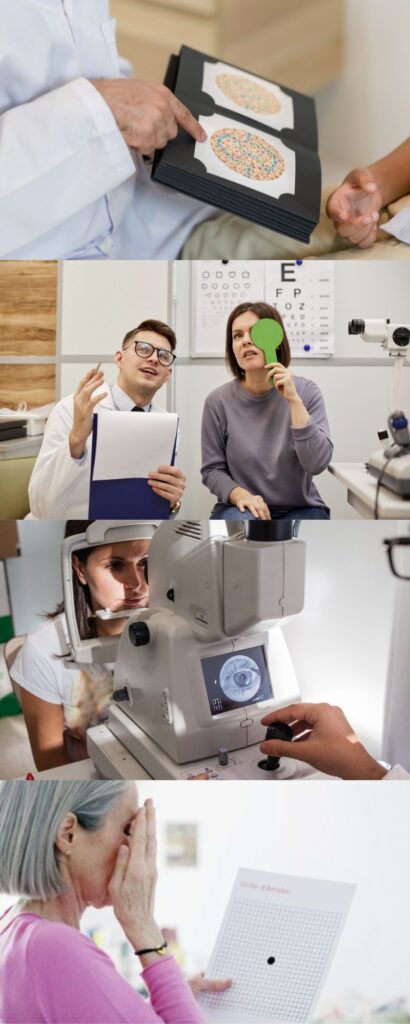
EyeQue is a global leader in digital eye health products capable of screening for vision metrics. This document explains what vision metrics and vision screening are and why they are important.
A “Vision Metric” is a measurable parameter crucial for monitoring visual function and eye health, including visual acuity, contrast sensitivity, color vision, stereoscopic vision, etc. It is widely used in research, clinical practice, and technological developments; vision metrics aid in understanding, diagnosing, and managing various eye conditions.
“Vision Screening” is a holistic approach health professionals use to assess visual function and eye health, identifying key metrics that offer valuable insights into the visual system’s condition. This approach aims to efficiently detect, monitor, and manage eye conditions by evaluating a range of vision metrics.
- Visual Acuity: Quantifies the sharpness and clarity of vision, particularly in identifying fine details
- Contrast Sensitivity: The ability to distinguish between different shades of light and dark.
- Color Vision: Assesses the perception and differentiation of colors, detecting anomalies and deficiencies.
- Central Retinal Vision: Evaluates the health and function of the macula for central visual acuity.
- Peripheral Vision: Examines the ability to see objects and movement outside the central visual field.
- Depth Perception: Assesses stereopsis and the perception of relative distance.
- Night Vision: Measures the ability to see in low-light conditions, identifying potential issues.
- Visual Field Testing: Examines the vision scope, including central and peripheral areas.
Just like regularly checking your blood pressure or taking your temperature, keeping an eye on your eye health is important. Here’s how early detection with vision marker screening can benefit you:
- Catch problems early: Regular screenings can help identify eye conditions early on, when treatment is often most effective.
- Manage eye diseases: If you have a condition like Diabetes, Glaucoma, or Macular Degeneration, regular monitoring can help track its progression and ensure you get the right care on time.
- Protect your future vision: Early detection can help prevent vision loss from many eye conditions.
- See your best: By keeping your eye health on track, you can maintain sharp, clear vision and enjoy all the beauty the world has to offer.
- Take charge of your health: Regular eye care empowers you to be proactive about your vision and overall health.
At EyeQue, we’re all about taking charge of your eye health. With our digital health devices, we offer Vision Screening, a vital step in proactive vision care customized to meet your unique eye health requirements.
Our products offer cutting-edge Vision Screening, empowering you with early detection and personalized care to ensure your vision stays in top shape. Be a champion of proactive vision care and experience the difference with EyeQue.

Frequent Vision Monitoring
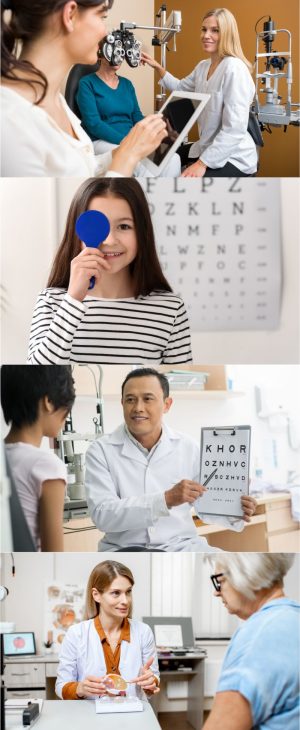
EyeQue stands out with a revolutionary digital health product line, leveraging advanced technology and boasting a robust pipeline of products integrating Artificial Intelligence.
With vision marker screening capabilities, our products enable early disease detection and progress monitoring. This proactive approach enhances treatment outcomes, reduces follow-up costs, and aligns seamlessly with the value-based care model. Patients and providers benefit from timely interventions, contributing to a more effective and efficient healthcare paradigm.
EyeQue products provide Frequent Vision Monitoring (FVM), an innovative and dynamic approach to eye health, embracing technology to provide frequent and personalized assessments of visual function. It is similar to the widely adopted Continuous Glucose Monitoring (CGM) used in diabetes management. This concept goes beyond traditional sporadic screenings, embracing technology to provide individuals with a proactive and personalized strategy for maintaining optimal vision and enhancing healthcare providers’ delivery capabilities.
- Track your vision over time: Just like tracking your steps with a fitness tracker, EyeQue lets you monitor your vision health regularly. This creates a dynamic profile, helping you and your eye doctor identify any changes early on.
- Smart Technology in your hand: Our easy-to-use devices with smart technology work seamlessly with your smartphone or other devices. This allows you to conveniently monitor your vision from the comfort of your home.
- Get personalized alerts: EyeQue can notify you of any potential changes in your vision health, so you can address them promptly with your eye doctor.
- Become an eye health pro: We provide educational resources to help you understand what vision markers mean. This empowers you to be an active participant in taking care of your eyes.
- Take charge of your eye health: EyeQue helps you understand your vision health better, so you can make informed decisions about your lifestyle, treatments, and preventive measures. This knowledge puts you in the driver’s seat of your eye care.
- See clearly, live fully: By keeping your vision sharp and healthy, you can enjoy all the little and big things in life without limitations. EyeQue empowers you to maintain optimal vision for a better quality of life.
EyeQue puts eye care at your fingertips with innovative technology. Our products can help you catch eye problems early by using Vision Screening. By letting you easily track your vision over time, we can help you and your eye doctor identify any changes early on. This can lead to better treatment outcomes, fewer doctor visits, and a more cost-effective approach to eye health. This technology is like a continuous glucose monitor (CGM) but here we are frequently monitoring vision markers of your eyes!
Think of EyeQue as your personal eye health tracker. We offer frequent vision monitoring (FVM) , which allows you to easily monitor your vision health at home, just as you would track your steps with a fitness tracker. This proactive approach empowers you to take charge of your eye health and allows your eye doctor to provide better care.
